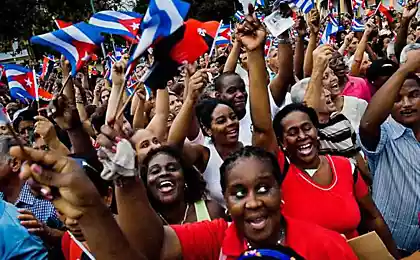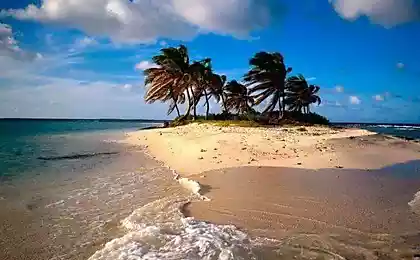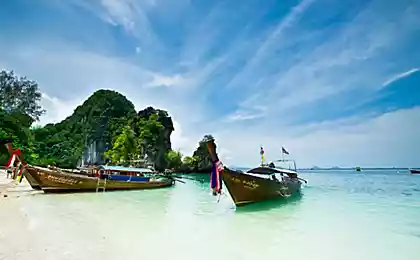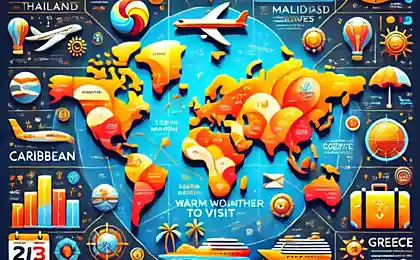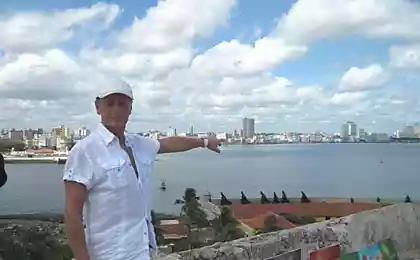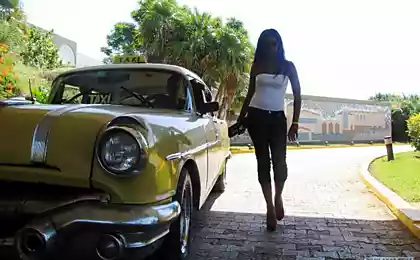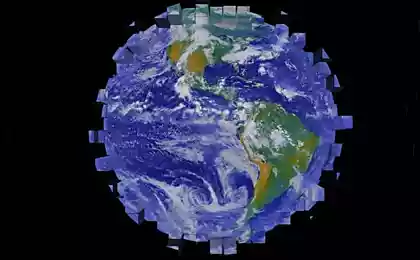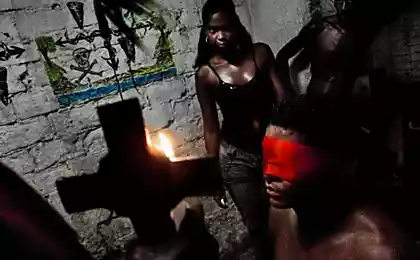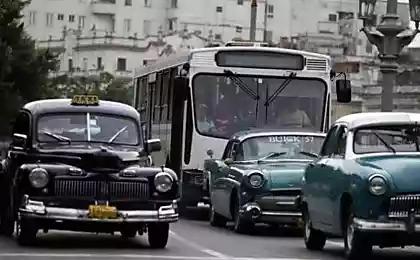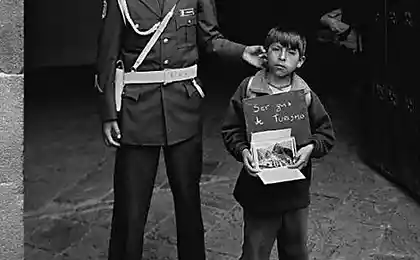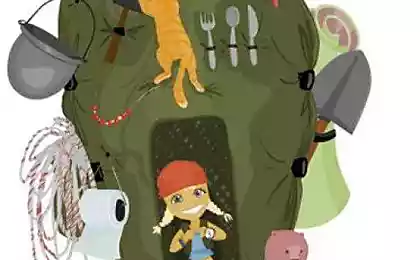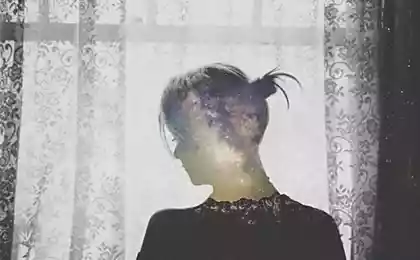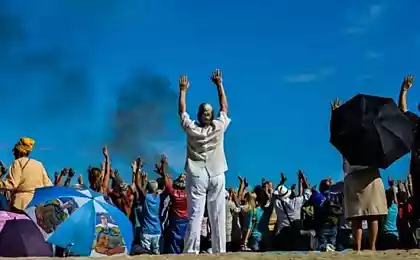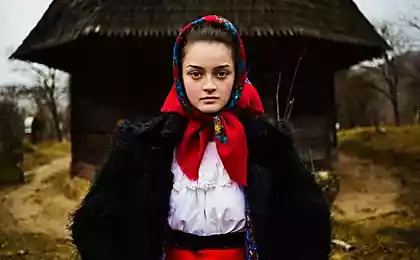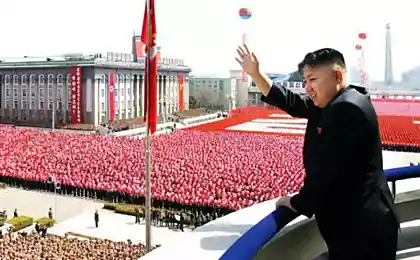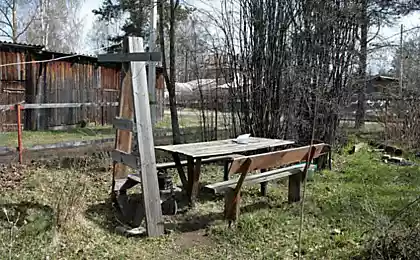1068
What is interesting to Cuba?
50 photos + text (many interesting letters)
So there you go.
= 1 =
Cuba (Spanish. Cuba), the official name - the Republic of Cuba (Spanish:. República de Cuba [repuβlika ðe kuβa]), an unofficial 1959 - Liberty Island) - an island nation in the northern Caribbean. The country occupies the island of Cuba as part of the Greater Antilles, the Isle of Youth and a number of smaller islands. From North America, Cuba is separated in the north of the Straits of Florida and the Yucatan Channel to the west.
The capital and largest city - Havana.
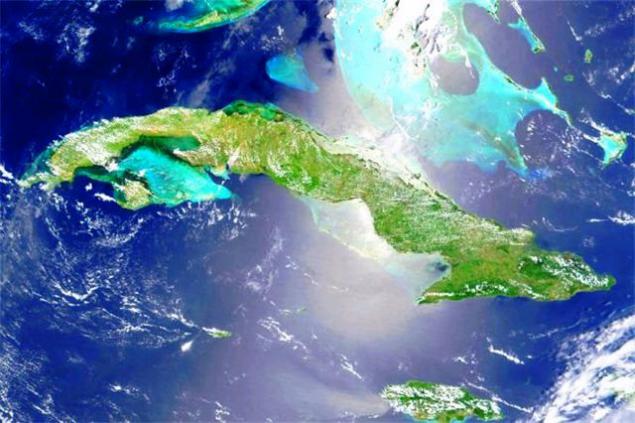
= 2 =
Cuba can justly be called a paradise on earth. The endless sandy beaches, azure sea, restless and passionate dance fun - you will not leave thinking that you were in fairyland.
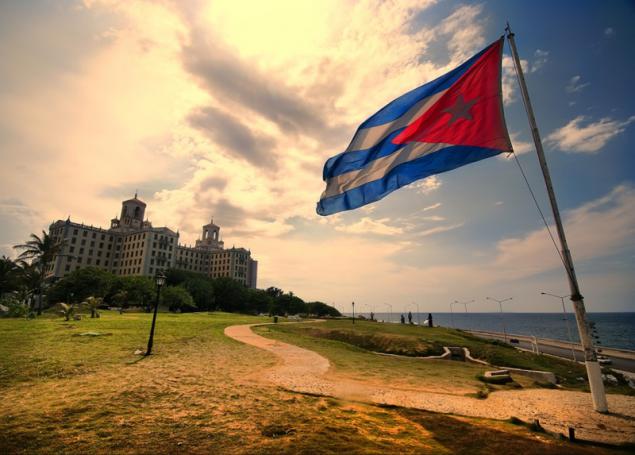
= 3 =
To get acquainted with the island of Freedom, first of all go to Havana. It is best seen contrasts the country. Do not be surprised nearby luxury skyscrapers with shabby little houses. And be prepared for genuine joie de vivre of its inhabitants. The life of Cubans is open, it passes on the street or on the balcony. Sit yourself talk through the open windows and doors, play on the porch of dominoes, play music and dance.
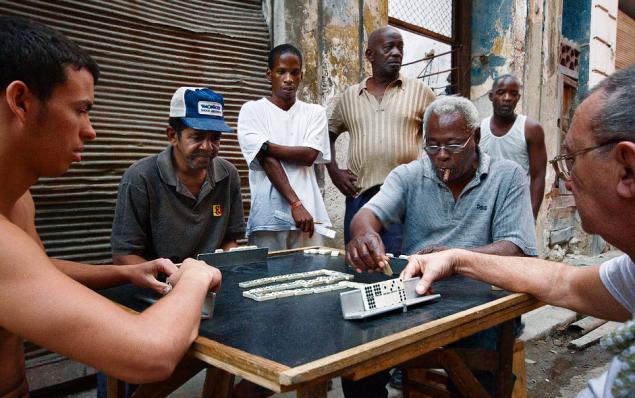
= 4 =
Anyway, if you dance or want to see how the local dance (and look at what is), do not waste time, dance in Havana. Kind of extreme during a trip to Cuba can be seen in the evening, when in some areas turning off the electricity. Entire streets and blocks are immersed in darkness. But to walk there, as assured already visited Cuba, quite safe.
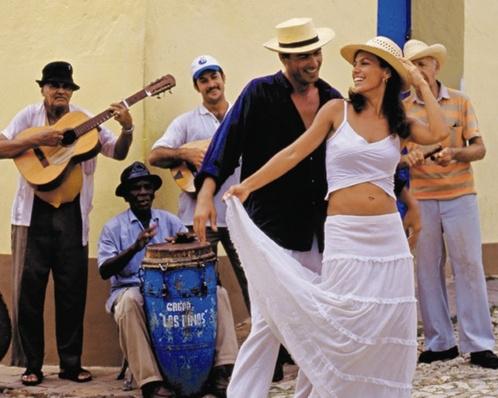
= 5 =
Cuba - a country with a unique culture. The building of socialism and poverty is strangely combined with the international resort and general merriment. Wake up here under the roosters crowing, look to the streets, hung with banners "We are well," try the freshly squeezed juice from sugar cane and rejoice in life, together with the inhabitants of the island. Call the horse with the cart instead of the cab, and soon on the tour. It will look at that!
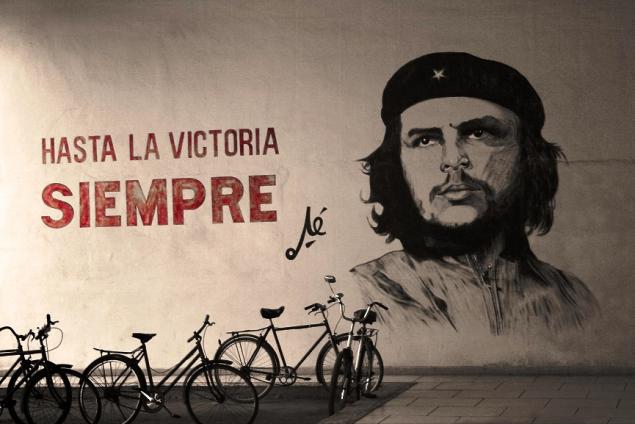
= 6 =
Havana
City thoroughly imbued with history and salt spray. Its picturesque boulevards and wide avenues with houses painted in pastel colors, from pale pink to pale blue, and remember the Spanish conquerors, and filibusters, and Cuban revolutionaries. There was strolling along the promenade Hemingway, dreamed of a bright future of the country José Martí and fought for the freedom of the Cuban people the legendary Che.
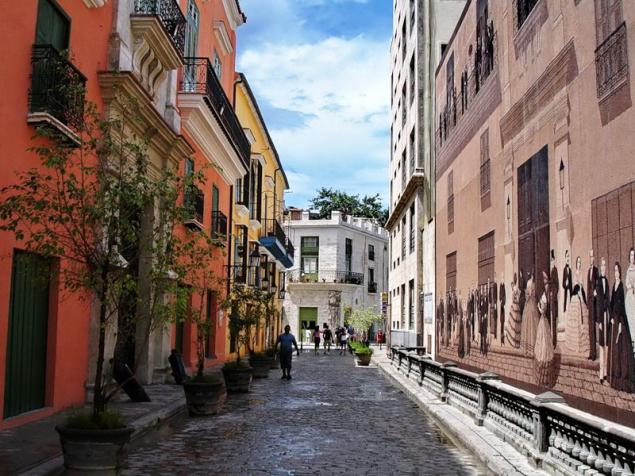
= 7 =
La Villa de San Cristobal de la Habana was founded nearly five hundred years ago, the Spanish conquistador Diego Velázquez. The city had a favorable geographic location, and the bay, located in the calm waters of the Gulf of Mexico, was the most comfortable in the Caribbean. All this has promoted the fact that soon became the largest Havana port. For replenishment of water supplies and are anchored shopping and warships. However, the wealth of the city has been attracting and pirates, so around Havana were built fortifications. Today - it is local pride.
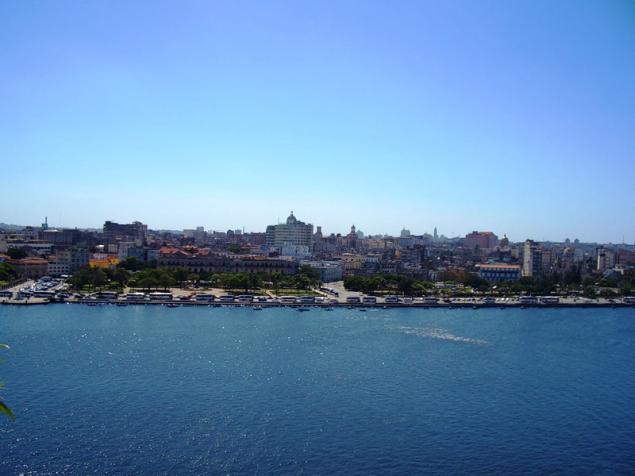
= 8 =
Havana - Cuba's largest city and its cultural center. In the historical center are protective fortresses and forts. Kastilyo del Morro - ancient fortification, a kind of symbol of Havana. Since the XIX century castle serves as a beacon. Another citadel - Fortaleza de San Carlos de la Cabaña. And though it was built later Kastilyo del Morro, together they make up an architectural ensemble - Park "Morro-Cabaña."
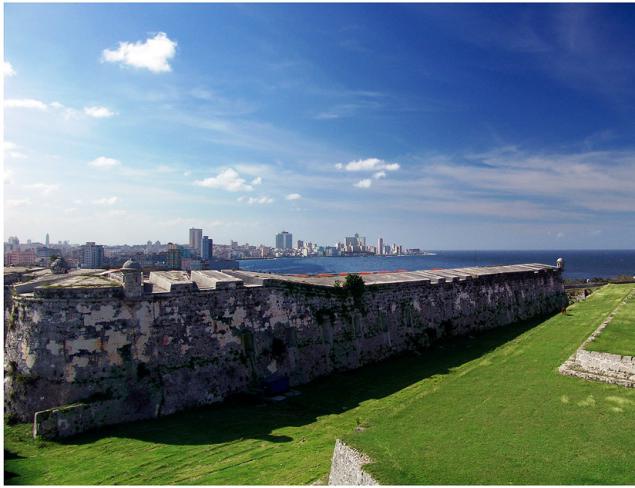
= 9 =
In the Bay of Havana were the ruins of the fortress wall that once protected the city from the sea land. On both sides of the fortress of La Punta and La Fuersa. In the latter now houses the Museum of ancient weapons. Not far from the fort of San Carlos de la Cabaña Havana stands a marble statue of Christ the height of 18 meters.

= 10 =
Do not walk on the Malecon in Havana - do not see half Havana.
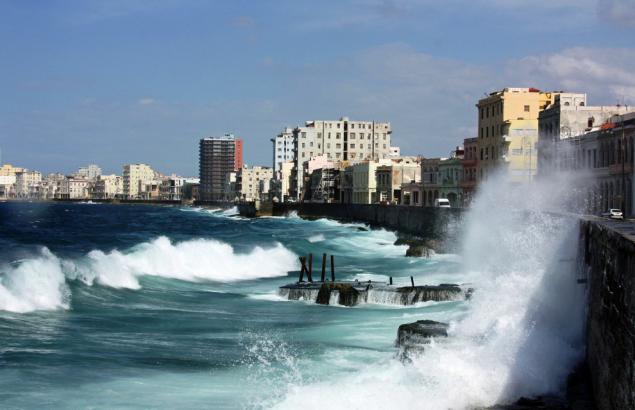
= 11 =
Malecon
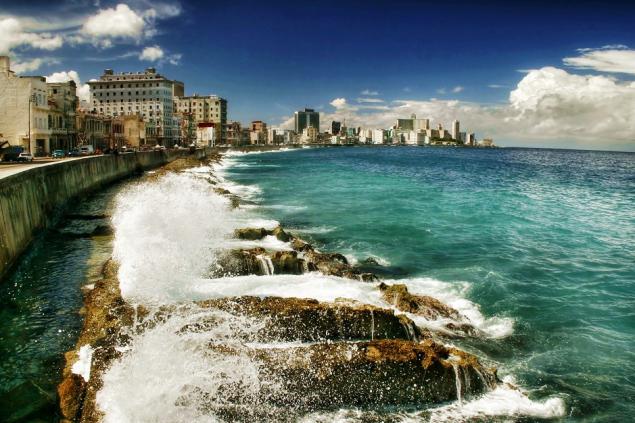
= 12 =
This is where the parade takes place during Carnival.
Carnival in Cuba.
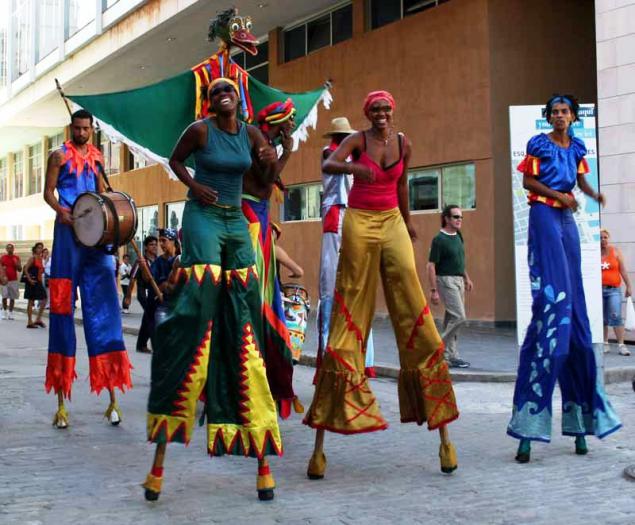
= 13 =
From here originates the main street of the city - Paseo del Prado. There is a building of the National Capitol - a huge palace impresses with its grandeur. It was built in 1929 in the image of the Capitol, which is the capital of the United States, but surpassed it in size. Nearby are the Museum of the Revolution, the Museum of the city and a monument "Granma", built in honor of the eponymous yacht on which the revolutionaries came to Cuba.

= 14 =
Be sure to visit the chapel of El templet. It was built in 1828, it is supposed to be on the site of the base of Havana. In the Plaza de la Catedral is the Cathedral in the Baroque style.

= 15 =
Here you can visit the bar "Bodeguita del Medio", which Ernest Hemingway loved to enjoy an icy mojito.

= 16 =
If you are interested in the life and work of Pope Ham, visit the estate "La Vigía", here today is a museum of Ernest Hemingway.
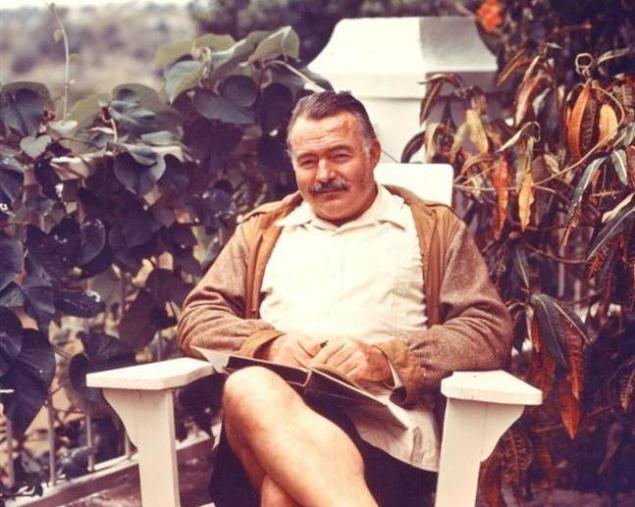
= 17 =
Areas of New Havana - modern office buildings, villas and hotels. In this place is the University of Havana and the Revolution Square, which is located José Martí Memorial.

= 18 =
Varadero
If the cultural capital of Havana Cuba, Varadero - the entertainment capital. The endless beaches with white sand, sky-blue water, Cuban rum and dance until the morning - it's Varadero.
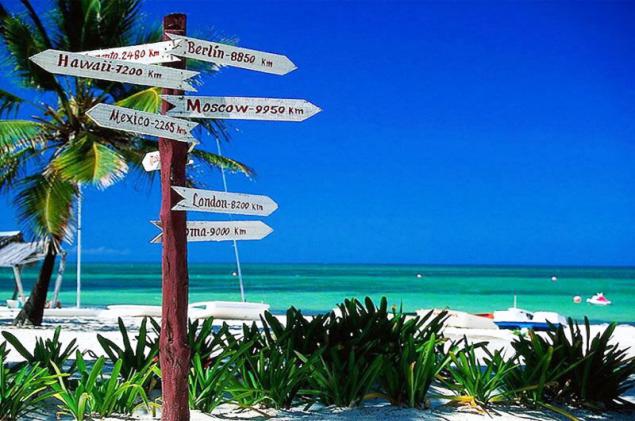
= 19 =
And it all began with a small villa built by American businessman Irene Dupont. His millions have equipped the city, so that he soon became popular, rich people come here to relax, play golf and swim in the crystal clear waters of the ocean.
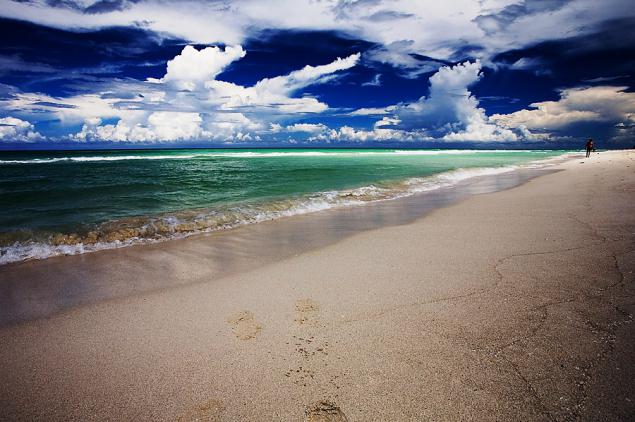
= 20 =
Gradually Varadero overgrown infrastructure and become the most popular resort in Cuba. There are luxury hotels with excellent service, restaurants and nightclubs.
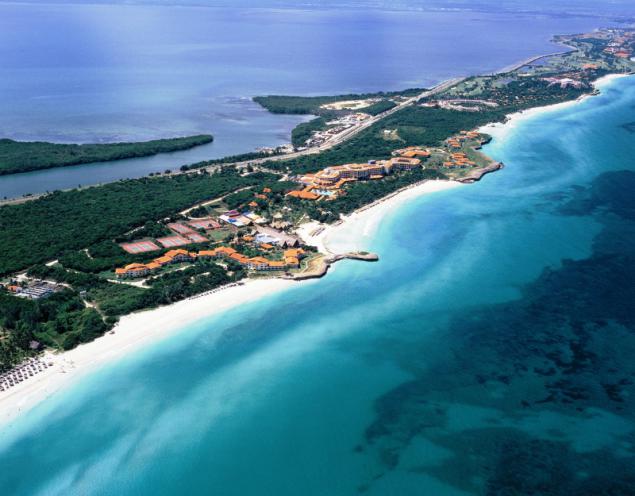
= 21 =
History enthusiasts can pay a visit to La Cueva de Ambrosio - the famous cave with cave paintings of ancient Indians, who once lived in this territory. In Varadero has an old fort Fuerte Espaneyol and the church Iglesia de Santa Elvira.

= 22 =
Varadero.
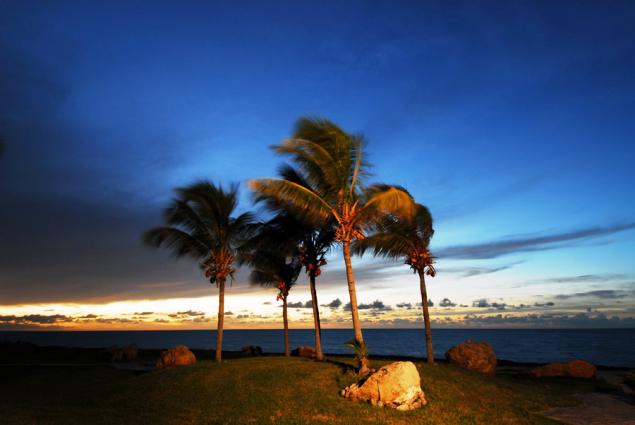
= 23 =
Varadero.
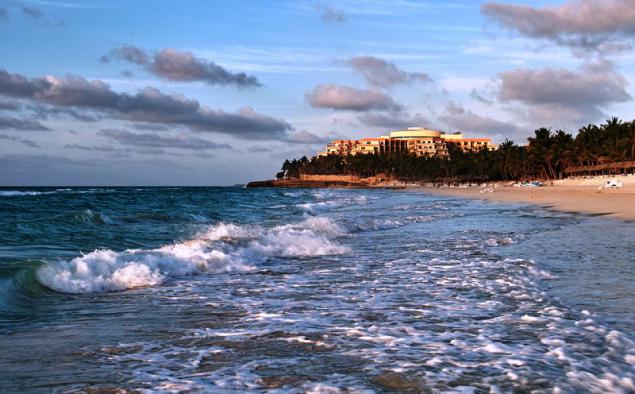
= 24 =
Matanzas
It is located in the same province as the Varadero, and is the second largest city in Cuba. It is called the Venice of Cuba, as it stands at the intersection of the rivers through which built many bridges.
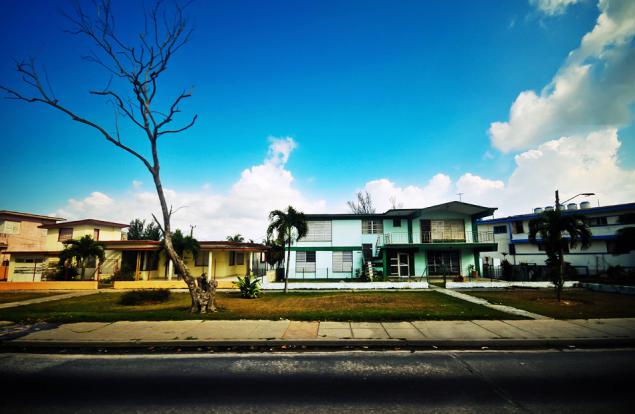
= 25 =
The most famous bridge - the hundred-meter Bakunayagua. Historically, Matanzas has been associated with the cultivation of sugar cane and tobacco. To do this, use slave labor, so in this area significantly greater mixing of the Cuban-African traditions.
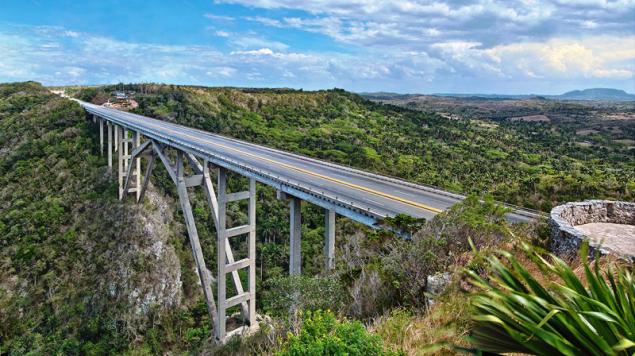
= 26 =
Matanzas In a lot of places worth visiting. In the Plaza de la Vigía, which is considered the birthplace of the city, located Theatre "South", built in 1863 by Italian architect Daniel Dal Aglio.
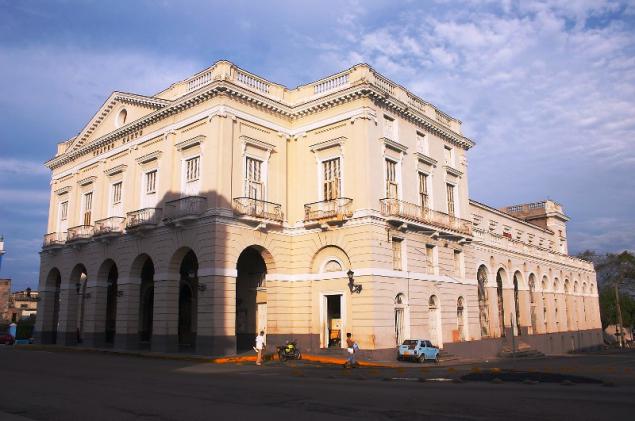
= 27 =
On the Plaza de Libertad is the Museum of Pharmacy, which displays ancient tools and equipment. To see all Matanzas, visit the chapel of Montserrat.
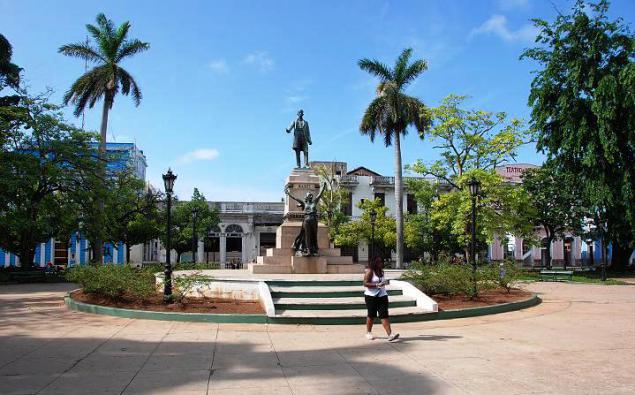
= 28 =
Just a few kilometers from the city is located Belyamar cave where you can see rock paintings that are more than a thousand years.
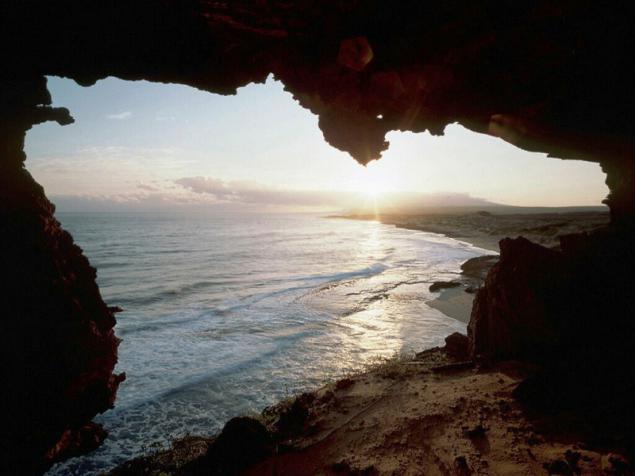
= 29 =
Matanzas

= 30 =
Trinidad
One of the oldest cities of Cuba, Trinidad is preserved in the form in which it experienced its heyday. In the XVIII century, the city played an important role in trade relations with the neighboring countries. There were huge sugar cane plantations, which provided him prosperity.
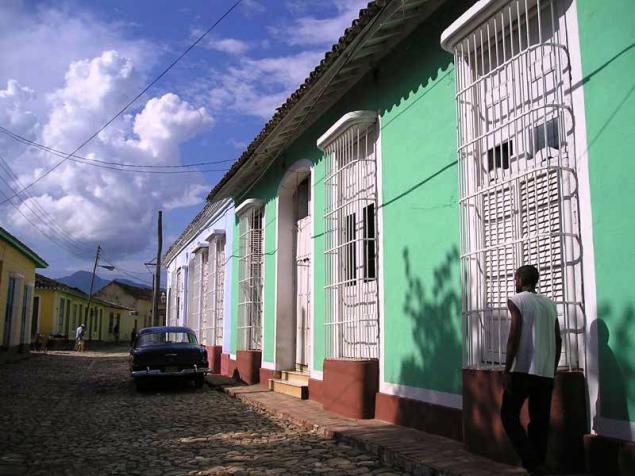
= 31 =
Trinidad is similar to the open-air museum: the stone bridge, carved windows and wrought-iron fences. Each building - its history. It seems that you get in the past.
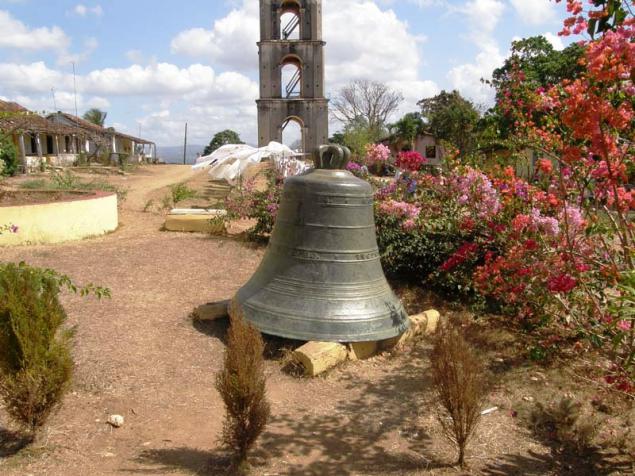
= 32 =
In the city a lot of museums and galleries. You can see the church of St. Francis and St. Mary of Trinidad. The town itself is located in a beautiful area. You can enjoy nature in the national park 'Topes de Collantes'.
Here you can see the waterfall El Kaburni, and in the valley of San Luis are the ruins of old sugar mills. And if you want to spend a day on the beach, close to the town are the beaches of Ancon and Maria Aguilar, located on a sandy spit stretching far into the sea
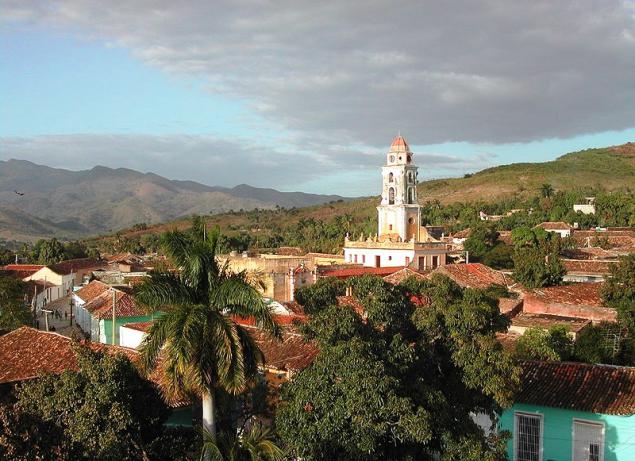
= 33 =
Isla de la Juventud
The legendary island where, according to legend, kept pirate treasure. The second largest island of Cuba, covered with pine forests (Island of Pines had the name - from the Spanish. Rino - pine) and orange groves, the island is part of the archipelago Canarreos Archipelago. Due to the mild climate and natural diversity, it is considered one of the most popular holiday destinations in Cuba.
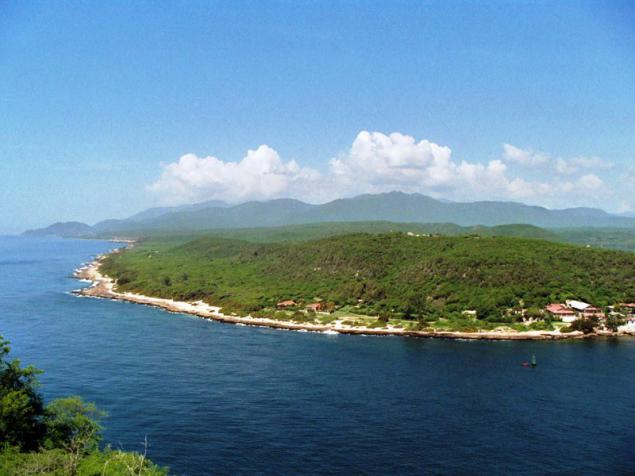
= 34 =
Fans can speleoturizma enough to explore the caves and grottos. And who prefer diving, will find everything here. The International Diving Center "El Colony" holds annual competitions for underwater photography. Anyone who is interested in flora and fauna, can walk on the reserve Los Indios, located near the town of San Felipe.

= 35 =
The capital of the Isle of Youth - Nueva Gerona. Here is the famous prison "Presidio Modelo" where he was Fidel Castro, the house in which he lived José Martí, when exiled for their political beliefs, church, museum.
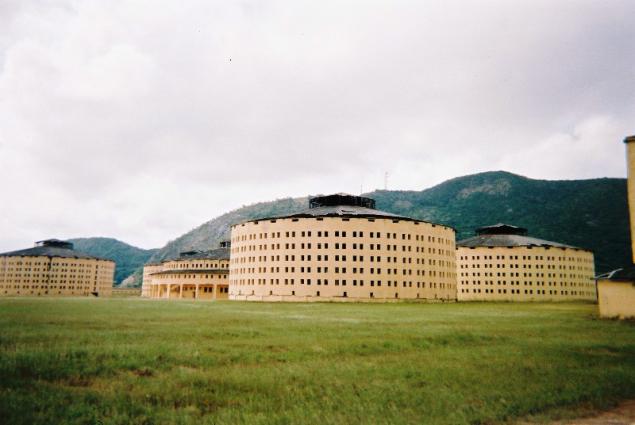
= 36 =
What else is worth a visit in Cuba:
- Beach Bibihagua on Isla de la Juventud. It differs from other black sand - the result of seawater on the local basalt rocks.
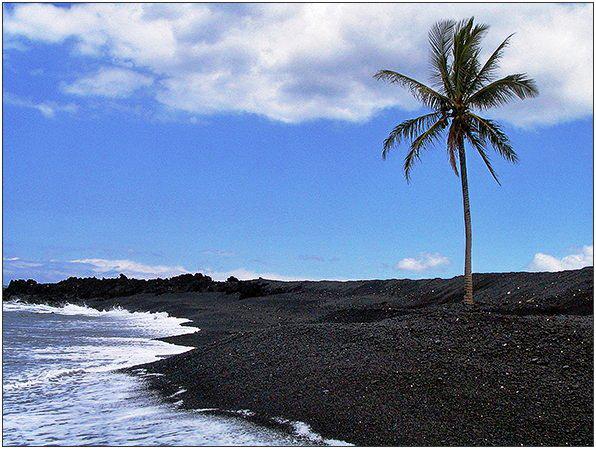
= 37 =
- The first capital of the Island of Freedom - Santiago de Cuba with the fortress of the XVII century Kastilyo del Morro and the Museum of Colonial Art
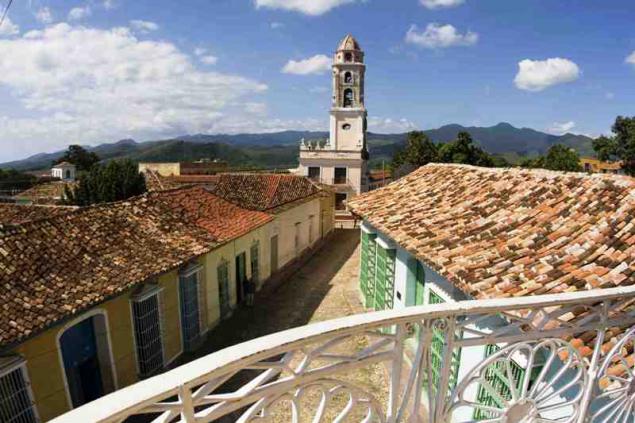
= 38 =
What is known Cuba:
- Rum. This drink started to make from sugar cane in the XVI century. It is believed that the Cuban rum - strong and at the same time delicious.
= 39 =
- Cigars. Given that kind of tobacco for cigars, was launched in Cuba, Cuba (Havana) cigars rightly took the place of the leader in the tobacco business.
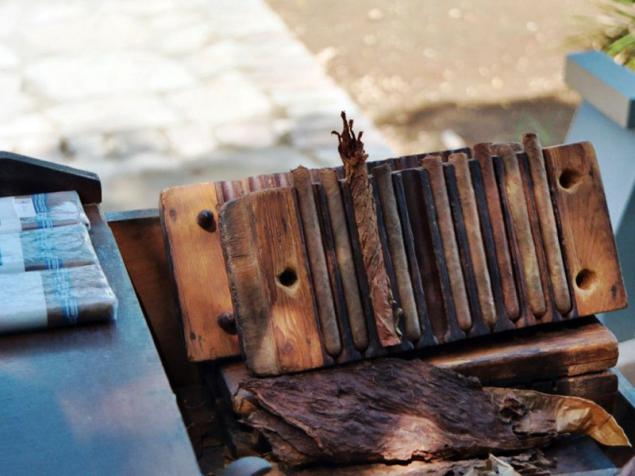
= 40 =
- Guantanamera (App. Guantanamera - a girl from Guantanamo Bay) - one of the most famous Cuban patriotic songs, based on the first verse of the very first poem, written in the XIX century Cuban poet and writer, fighter for the liberation of Cuba from Spain Jose Marti, first published in its collection «Versos Sencillos» («Simple verses»).
Music is considered to be written by Jose Fernandez Diaz ("Hoseito") in 1929 (exact date unknown). He also wrote a full version of the song, which is considered a "classical».
Taking into account the respect for Cubans to Marty, we can say that the song became almost an unofficial anthem of Cuba. There are numerous options and a rehash of a popular song.
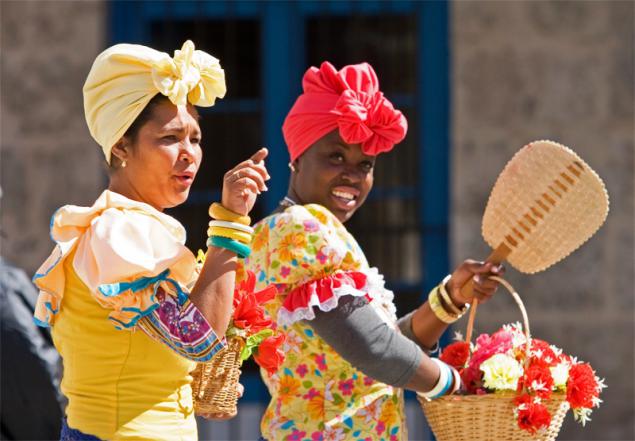
= 41 =
- Guantanamo (Guantanamo Bay detention camp) - a camp for persons accused by US authorities of various crimes, particularly in the conduct of the war on the side of the enemy, to permanently leased US naval base in Guantanamo Bay (Cuba), 15 km from the eponymous town. The prison appeared in January 2002, when there were transported from Afghanistan first 20 people accused of "being involved in the fighting on the side of Islamic extremists" - the Taliban. From 2002 to 2006 she passed through more than 750 foreigners seized by US troops during operations in Afghanistan and Iraq.
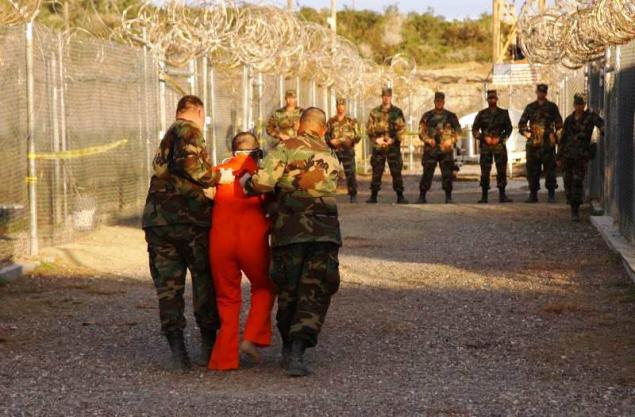
= 42 =
- Incendiary dance "salsa" (remember "Dirty Dancing»?)
= 43 =
What is known Cuba:
- Jose Marti. Journalist, writer and national hero of Cuba, organized by the Cuban Revolutionary Party, and in 1895, under his leadership, the second war for independence of the Cuban people. In the first fight Marty died.

= 44 =
- Ernesto Che Guevara (Spanish. Ernesto Che Guevara, the full name of Ernesto Guevara de la Serna, Spanish. Ernesto Guevara de la Serna; June 14, 1928, Rosario, Argentina - October 9, 1967, La Igera, Bolivia) - Latin American revolutionary comandante Cuban the 1959 revolution and the Cuban statesman. In addition to the Latin American continent also acted in the Republic of Congo. Nickname Che received from the Cuban rebels of the characteristic Argentine interjection che, borrowed from the Guarani Indians, which sends, depending on intonation and context, different feelings. Most often translated as "friend of a friend."
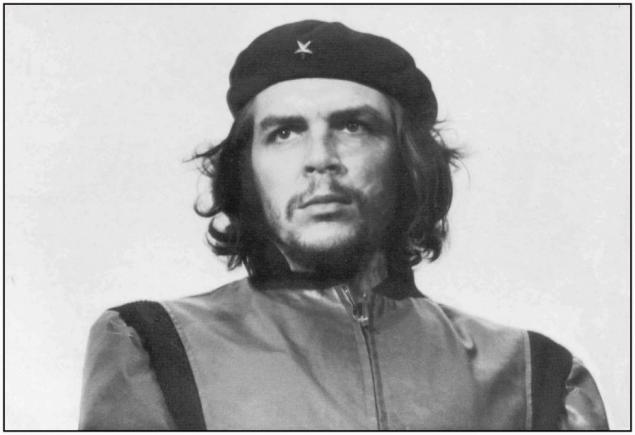
= 45 =
- Fidel Alejandro Castro Ruz (App. Fidel Alejandro Castro Ruz, was born August 13, 1926) - Cuban revolutionary and political leader, Comandante, the head of Cuba from 1959 to 2008.
Together with his brother Raul Castro and Argentine Ernesto Che Guevara led the Cuban revolutionary movement against the dictator Batista. After the victory of the revolution January 1, 1959, Fidel Castro became Prime Minister of the Republic of Cuba, and from 1976 to 2008 - the president.
At the moment, the president of Cuba is his brother - Raul.
= 46 =
And if you have the opportunity to visit Cuba, do not hesitate. Liberty Island and the new experience you definitely will never forget! However, it is a pleasure expensive.
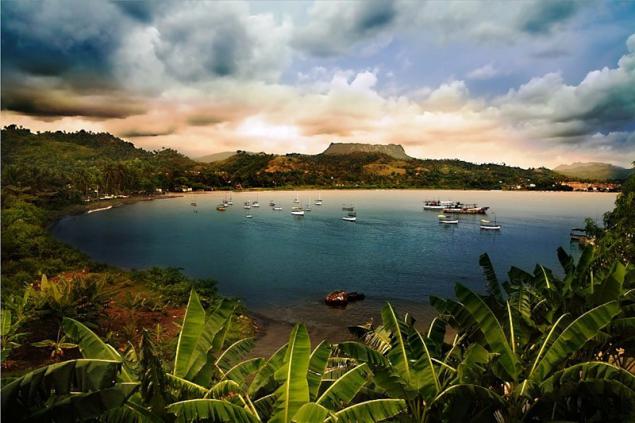
= 47 =

= 48 =

= 49 =

= 50 =
Graduated =)
In the photo - Western Cuba.

Source:
So there you go.
= 1 =
Cuba (Spanish. Cuba), the official name - the Republic of Cuba (Spanish:. República de Cuba [repuβlika ðe kuβa]), an unofficial 1959 - Liberty Island) - an island nation in the northern Caribbean. The country occupies the island of Cuba as part of the Greater Antilles, the Isle of Youth and a number of smaller islands. From North America, Cuba is separated in the north of the Straits of Florida and the Yucatan Channel to the west.
The capital and largest city - Havana.

= 2 =
Cuba can justly be called a paradise on earth. The endless sandy beaches, azure sea, restless and passionate dance fun - you will not leave thinking that you were in fairyland.

= 3 =
To get acquainted with the island of Freedom, first of all go to Havana. It is best seen contrasts the country. Do not be surprised nearby luxury skyscrapers with shabby little houses. And be prepared for genuine joie de vivre of its inhabitants. The life of Cubans is open, it passes on the street or on the balcony. Sit yourself talk through the open windows and doors, play on the porch of dominoes, play music and dance.

= 4 =
Anyway, if you dance or want to see how the local dance (and look at what is), do not waste time, dance in Havana. Kind of extreme during a trip to Cuba can be seen in the evening, when in some areas turning off the electricity. Entire streets and blocks are immersed in darkness. But to walk there, as assured already visited Cuba, quite safe.

= 5 =
Cuba - a country with a unique culture. The building of socialism and poverty is strangely combined with the international resort and general merriment. Wake up here under the roosters crowing, look to the streets, hung with banners "We are well," try the freshly squeezed juice from sugar cane and rejoice in life, together with the inhabitants of the island. Call the horse with the cart instead of the cab, and soon on the tour. It will look at that!

= 6 =
Havana
City thoroughly imbued with history and salt spray. Its picturesque boulevards and wide avenues with houses painted in pastel colors, from pale pink to pale blue, and remember the Spanish conquerors, and filibusters, and Cuban revolutionaries. There was strolling along the promenade Hemingway, dreamed of a bright future of the country José Martí and fought for the freedom of the Cuban people the legendary Che.

= 7 =
La Villa de San Cristobal de la Habana was founded nearly five hundred years ago, the Spanish conquistador Diego Velázquez. The city had a favorable geographic location, and the bay, located in the calm waters of the Gulf of Mexico, was the most comfortable in the Caribbean. All this has promoted the fact that soon became the largest Havana port. For replenishment of water supplies and are anchored shopping and warships. However, the wealth of the city has been attracting and pirates, so around Havana were built fortifications. Today - it is local pride.

= 8 =
Havana - Cuba's largest city and its cultural center. In the historical center are protective fortresses and forts. Kastilyo del Morro - ancient fortification, a kind of symbol of Havana. Since the XIX century castle serves as a beacon. Another citadel - Fortaleza de San Carlos de la Cabaña. And though it was built later Kastilyo del Morro, together they make up an architectural ensemble - Park "Morro-Cabaña."

= 9 =
In the Bay of Havana were the ruins of the fortress wall that once protected the city from the sea land. On both sides of the fortress of La Punta and La Fuersa. In the latter now houses the Museum of ancient weapons. Not far from the fort of San Carlos de la Cabaña Havana stands a marble statue of Christ the height of 18 meters.

= 10 =
Do not walk on the Malecon in Havana - do not see half Havana.

= 11 =
Malecon

= 12 =
This is where the parade takes place during Carnival.
Carnival in Cuba.

= 13 =
From here originates the main street of the city - Paseo del Prado. There is a building of the National Capitol - a huge palace impresses with its grandeur. It was built in 1929 in the image of the Capitol, which is the capital of the United States, but surpassed it in size. Nearby are the Museum of the Revolution, the Museum of the city and a monument "Granma", built in honor of the eponymous yacht on which the revolutionaries came to Cuba.

= 14 =
Be sure to visit the chapel of El templet. It was built in 1828, it is supposed to be on the site of the base of Havana. In the Plaza de la Catedral is the Cathedral in the Baroque style.

= 15 =
Here you can visit the bar "Bodeguita del Medio", which Ernest Hemingway loved to enjoy an icy mojito.

= 16 =
If you are interested in the life and work of Pope Ham, visit the estate "La Vigía", here today is a museum of Ernest Hemingway.

= 17 =
Areas of New Havana - modern office buildings, villas and hotels. In this place is the University of Havana and the Revolution Square, which is located José Martí Memorial.

= 18 =
Varadero
If the cultural capital of Havana Cuba, Varadero - the entertainment capital. The endless beaches with white sand, sky-blue water, Cuban rum and dance until the morning - it's Varadero.

= 19 =
And it all began with a small villa built by American businessman Irene Dupont. His millions have equipped the city, so that he soon became popular, rich people come here to relax, play golf and swim in the crystal clear waters of the ocean.

= 20 =
Gradually Varadero overgrown infrastructure and become the most popular resort in Cuba. There are luxury hotels with excellent service, restaurants and nightclubs.

= 21 =
History enthusiasts can pay a visit to La Cueva de Ambrosio - the famous cave with cave paintings of ancient Indians, who once lived in this territory. In Varadero has an old fort Fuerte Espaneyol and the church Iglesia de Santa Elvira.

= 22 =
Varadero.

= 23 =
Varadero.

= 24 =
Matanzas
It is located in the same province as the Varadero, and is the second largest city in Cuba. It is called the Venice of Cuba, as it stands at the intersection of the rivers through which built many bridges.

= 25 =
The most famous bridge - the hundred-meter Bakunayagua. Historically, Matanzas has been associated with the cultivation of sugar cane and tobacco. To do this, use slave labor, so in this area significantly greater mixing of the Cuban-African traditions.

= 26 =
Matanzas In a lot of places worth visiting. In the Plaza de la Vigía, which is considered the birthplace of the city, located Theatre "South", built in 1863 by Italian architect Daniel Dal Aglio.

= 27 =
On the Plaza de Libertad is the Museum of Pharmacy, which displays ancient tools and equipment. To see all Matanzas, visit the chapel of Montserrat.

= 28 =
Just a few kilometers from the city is located Belyamar cave where you can see rock paintings that are more than a thousand years.

= 29 =
Matanzas

= 30 =
Trinidad
One of the oldest cities of Cuba, Trinidad is preserved in the form in which it experienced its heyday. In the XVIII century, the city played an important role in trade relations with the neighboring countries. There were huge sugar cane plantations, which provided him prosperity.

= 31 =
Trinidad is similar to the open-air museum: the stone bridge, carved windows and wrought-iron fences. Each building - its history. It seems that you get in the past.

= 32 =
In the city a lot of museums and galleries. You can see the church of St. Francis and St. Mary of Trinidad. The town itself is located in a beautiful area. You can enjoy nature in the national park 'Topes de Collantes'.
Here you can see the waterfall El Kaburni, and in the valley of San Luis are the ruins of old sugar mills. And if you want to spend a day on the beach, close to the town are the beaches of Ancon and Maria Aguilar, located on a sandy spit stretching far into the sea

= 33 =
Isla de la Juventud
The legendary island where, according to legend, kept pirate treasure. The second largest island of Cuba, covered with pine forests (Island of Pines had the name - from the Spanish. Rino - pine) and orange groves, the island is part of the archipelago Canarreos Archipelago. Due to the mild climate and natural diversity, it is considered one of the most popular holiday destinations in Cuba.

= 34 =
Fans can speleoturizma enough to explore the caves and grottos. And who prefer diving, will find everything here. The International Diving Center "El Colony" holds annual competitions for underwater photography. Anyone who is interested in flora and fauna, can walk on the reserve Los Indios, located near the town of San Felipe.

= 35 =
The capital of the Isle of Youth - Nueva Gerona. Here is the famous prison "Presidio Modelo" where he was Fidel Castro, the house in which he lived José Martí, when exiled for their political beliefs, church, museum.

= 36 =
What else is worth a visit in Cuba:
- Beach Bibihagua on Isla de la Juventud. It differs from other black sand - the result of seawater on the local basalt rocks.

= 37 =
- The first capital of the Island of Freedom - Santiago de Cuba with the fortress of the XVII century Kastilyo del Morro and the Museum of Colonial Art

= 38 =
What is known Cuba:
- Rum. This drink started to make from sugar cane in the XVI century. It is believed that the Cuban rum - strong and at the same time delicious.
= 39 =
- Cigars. Given that kind of tobacco for cigars, was launched in Cuba, Cuba (Havana) cigars rightly took the place of the leader in the tobacco business.

= 40 =
- Guantanamera (App. Guantanamera - a girl from Guantanamo Bay) - one of the most famous Cuban patriotic songs, based on the first verse of the very first poem, written in the XIX century Cuban poet and writer, fighter for the liberation of Cuba from Spain Jose Marti, first published in its collection «Versos Sencillos» («Simple verses»).
Music is considered to be written by Jose Fernandez Diaz ("Hoseito") in 1929 (exact date unknown). He also wrote a full version of the song, which is considered a "classical».
Taking into account the respect for Cubans to Marty, we can say that the song became almost an unofficial anthem of Cuba. There are numerous options and a rehash of a popular song.

= 41 =
- Guantanamo (Guantanamo Bay detention camp) - a camp for persons accused by US authorities of various crimes, particularly in the conduct of the war on the side of the enemy, to permanently leased US naval base in Guantanamo Bay (Cuba), 15 km from the eponymous town. The prison appeared in January 2002, when there were transported from Afghanistan first 20 people accused of "being involved in the fighting on the side of Islamic extremists" - the Taliban. From 2002 to 2006 she passed through more than 750 foreigners seized by US troops during operations in Afghanistan and Iraq.

= 42 =
- Incendiary dance "salsa" (remember "Dirty Dancing»?)
= 43 =
What is known Cuba:
- Jose Marti. Journalist, writer and national hero of Cuba, organized by the Cuban Revolutionary Party, and in 1895, under his leadership, the second war for independence of the Cuban people. In the first fight Marty died.

= 44 =
- Ernesto Che Guevara (Spanish. Ernesto Che Guevara, the full name of Ernesto Guevara de la Serna, Spanish. Ernesto Guevara de la Serna; June 14, 1928, Rosario, Argentina - October 9, 1967, La Igera, Bolivia) - Latin American revolutionary comandante Cuban the 1959 revolution and the Cuban statesman. In addition to the Latin American continent also acted in the Republic of Congo. Nickname Che received from the Cuban rebels of the characteristic Argentine interjection che, borrowed from the Guarani Indians, which sends, depending on intonation and context, different feelings. Most often translated as "friend of a friend."

= 45 =
- Fidel Alejandro Castro Ruz (App. Fidel Alejandro Castro Ruz, was born August 13, 1926) - Cuban revolutionary and political leader, Comandante, the head of Cuba from 1959 to 2008.
Together with his brother Raul Castro and Argentine Ernesto Che Guevara led the Cuban revolutionary movement against the dictator Batista. After the victory of the revolution January 1, 1959, Fidel Castro became Prime Minister of the Republic of Cuba, and from 1976 to 2008 - the president.
At the moment, the president of Cuba is his brother - Raul.
= 46 =
And if you have the opportunity to visit Cuba, do not hesitate. Liberty Island and the new experience you definitely will never forget! However, it is a pleasure expensive.

= 47 =

= 48 =

= 49 =

= 50 =
Graduated =)
In the photo - Western Cuba.

Source:
